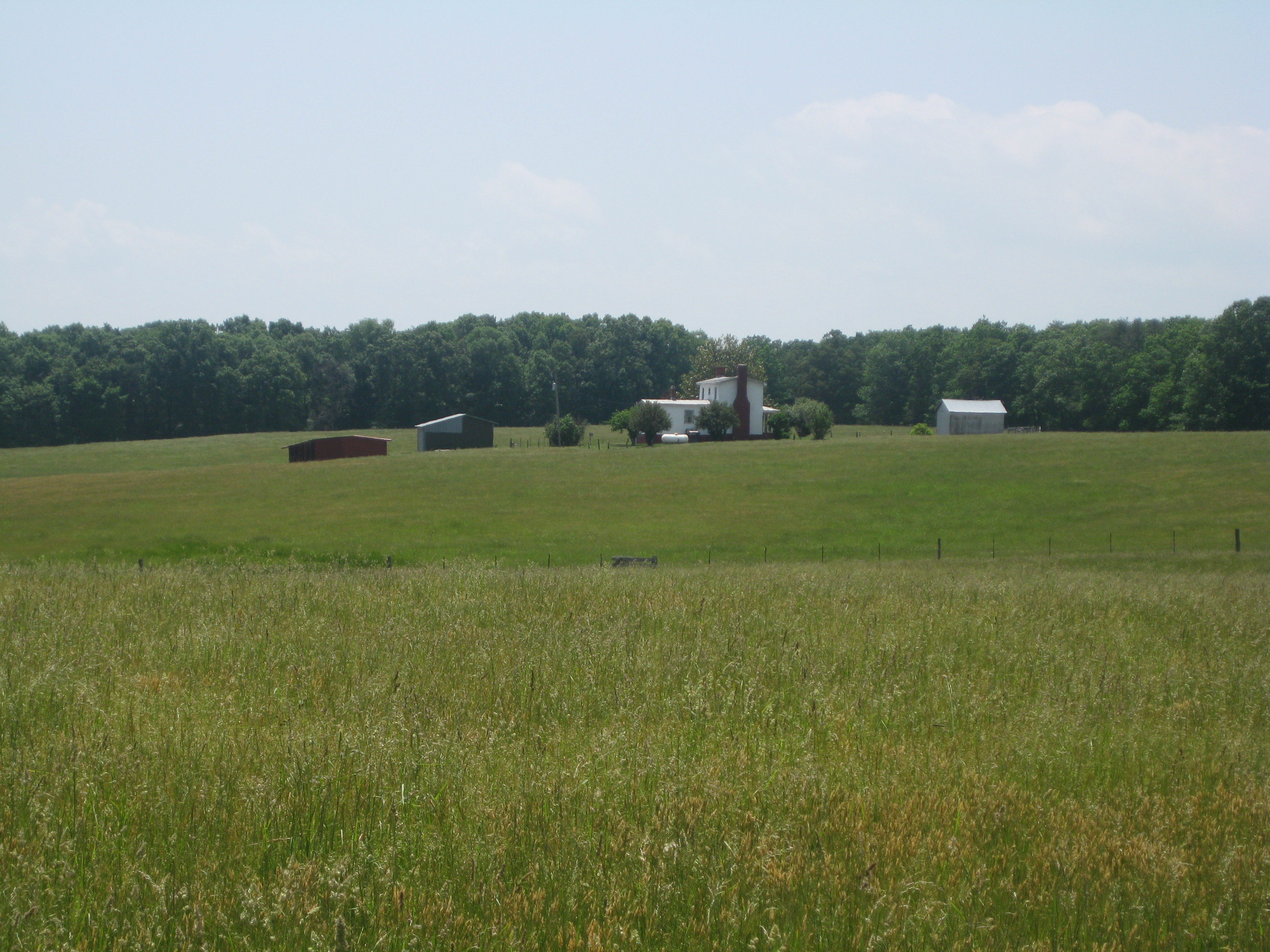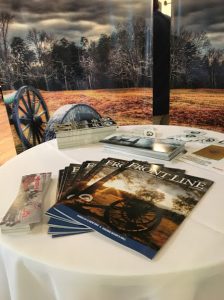Why Do We Preserve Battlefields?

I was asked why we should protect battlefields today. That question surprised me, as I have always taken the answer for granted—we just do. But it seemed to be a legitimate, good faith question, so I harnessed my inner smarty pants and decided to answer it seriously.
For more than twenty years now, I have been deeply involved in battlefield preservation works. I served as vice president of the Buffington Island Battlefield Preservation Foundation here in Ohio for a couple of years, but that organization was totally dysfunctional and ineffective, and the heart of the battlefield was destroyed and turned into a sand and gravel mine. It was almost enough to make one ill watching as that beautiful pristine ground vanished because the Governor of Ohio refused to take a stand to protect Ohio’s only significant Civil War battlefield. It would have required an eminent domain proceeding, and former Gov. Bob Taft had no interest in such a thing. And so, the heart of that battlefield—the spot where the heaviest fighting occurred—was forever and irreparably destroyed.

I am presently finishing my second year as a member of the board of directors of the Central Virginia Battlefields Trust, located in Fredericksburg, Virginia. The CVBT is a local advocacy group focused on preserving battlefields in and near Spotsylvania County, Virginia. It’s been around for more than twenty years, and it has been one of the most effective local advocacy groups working in the space. Being involved in the day-to-day business decisions and workings of the group has provided me with a great opportunity to understand how advocacy groups fund their acquisitions. Unlike the BIBPF, the CVBT gets things done, which I find enormously rewarding.
For many years now, I’ve been involved in efforts to preserve the Trevilian Station battlefield in Louisa County, Virginia. Trevilian Station was the Civil War’s largest all-cavalry battle, and when I first began working on it in 1996 or 1997, there was not a single acre of land there that was protected. Today, there are more than 2000 acres that have been preserved. I often work with the American Battlefield Trust in identifying parcels to acquire, drafting statements of historic significance to explain why those parcels should be acquired, and then I help with the fundraising efforts.
All of this is where my true passion lies. I spend a lot of time, effort, and money on my preservation work. It’s a rare day that I’m not doing something related to battlefield preservation, whether it’s the everyday business of the CVBT, or my work with the ABT.
So, why do I invest my time, effort, and money into battlefield preservation? These battlefields are hallowed ground, consecrated by the blood of those who fought, suffered, and died there. It is our responsibility—both moral and ethical—to preserve that ground for future generations. My late friend and mentor, Brian C. Pohanka—who left us way too soon—was one of the founders of the modern battlefield preservation movement in the 1980’s. As Brian profoundly said, “Some kid a hundred years from now is going to get interested in the Civil War and want to see these places. He’s going to go down there and be standing in a parking lot. I’m fighting for that kid.”
Or, as Maj. Gen. Joshua Lawrence Chamberlain extremely eloquently said of the battlefield at Gettysburg:
In great deeds, something abides. On great fields, something stays. Forms change and pass; bodies disappear; but spirits linger, to consecrate ground for the vision-place of souls… generations that know us not and that we know not of, heart-drawn to see where and by whom great things were suffered and done for them, shall come to this deathless field, to ponder and dream; and lo! the shadow of a mighty presence shall wrap them in its bosom, and the power of the vision pass into their souls.
I can’t say it better than Chamberlain did, so I won’t even try. But Chamberlain’s point is a valid one—people will always be drawn to see where their ancestors fought and died for their principles. That, alone, is reason enough.
However, there’s also the fact that once that first spade of dirt is turned at these battlefields—once the pristine ground has been disturbed—that bell can never, ever be unrung. The only way to ensure that the legacy is protected is to preserve the land.
Finally, I view these battlefields as giant outdoor classrooms. As the great military historian Carl von Clausewitz wrote in his classic study of strategy in the Napoleonic Wars, “geography and the character of the ground bear a close and ever-present relation to warfare. They have a decisive influence on the engagement, both as to its course and to its planning and exploitation.” Or, as an old friend who spent 26 years as a combat engineer likes to say, “the terrain is THE primary source.” To truly understand what happened on these battlefields, one must study and understand the interplay among strategy, tactics, and the terrain. It’s a true statement that the terrain drives the action, which is what my friend the combat engineer meant when he said that the terrain is THE primary source: if you can’t understand how the terrain played into the events in question, then you will never truly understand what happened on battlefields. If the terrain has been materially changed, you can never hope to truly understand the events that occurred on that terrain. It’s really that simple.
That’s why we preserve battlefields.

This is a great piece. As someone who takes my APUSH class to Gettysburg every year, and who has visited many battlefields associated with the Army of the Potomac during my research for my book on the 65th NY Volunteer Infantry (No Flinching From Fire), I have to say I thoroughly agree with your points about preservation. And I was lucky enough to meet Mr. Pohanka when he appeared at the school I taught at in the 1990s when he did a presentation there. We talked about primary sources and researching the Civil War. Thanks for sharing your thoughts.
This great piece should be disseminated widely. I have an inkling of whom that combat engineer is and I’m sure he’d agree wholeheartedly. Thanks, Eric
Great piece Eric, thank you. I would only add one thought…the battlefields are also a living memorial to the brave men who wore blue and grey and sacrificed their life’s blood on the fields of honor.
A great piece. Nothing can grab the attention and interest better than being able to stand on the spot where the battle lines were placed or where a famous individual walked or stood. Its not the same if that spot is now a parking lot or inside a building. I get a daily reminder since my route to and from work takes me over what was the Big Bethel Battlefield which is now all but gone.
I met Mr. Pohanka at a Gettysburg reenactment ( remember them?); charming fellow. Any inch of America not covered in concrete is a good green space.
I now live in Switzerland but lived near Gettysburg for a few years in the 1990s. It was the most wonderful place to visit and yes, I agree with the idea of a great outdoor classroom that can by its physicality educate and inform is inherent in battlefields on land. The problem for me is is that I’m a naval historian and so much of the sense and context of a battle at sea is lost forever. The closest one can come to battlefield preservation is wreck preservation but here, I feel, increasingly the wrecks cannot be preserved and so it’s better that they give up their stories that – as long as given to the public and done with respect for what are war graves – can serve as an equal value to passing history along.
Wonderful writing.
Reading about terrain is nice, but not as powerful as standing 9n that ground. You might read about the rolling hills of Perryville, the field geographically closest to me and my heart, but walking up and down and back up them taught me more than even the finest books, but it’s more than tactics – it’s the humanity of those who fought there. I could understand their fatigue or how they could not see what was over the next hill. I didn’t have bullets and shells flying by me, but the very basic fatigue, thirst and uncertainty connected me to the real people who fought there. Of course, the tactics and leadership both matter, but it’s that human aspect of the thousands of men that grabbed my soul.
I just moved to Virginia from Ohio. I’ve only been able to go to one battlefield memorial so far but I am looking forward to visiting as many as I can. Thank you for all you di to preserve them.
In 1945 I was born on part of a battlefield, in the Braddock Hospital east of downtown, Pittsburgh, the battle fought there in July 1755 was the Battle of the Monongahela, commonly known as Braddock’s Defeat by the French. Few people have any idea what happened here, the first large scale battle of the French and Indian War. Of course it was never preserved, and lays under urban housing and the ET US steel company. Am now completing a book on the 139th Pa.infantry to preserve the memory of these brave veterans.
I live in Culpeper, Va., where, thanks to the ongoing efforts of several people, quite a bit of property where Civil War battles and occupation by both the north and south has been preserved. Not that it really matters, I am a proud Virginian by birth and my family can trace its roots back to the Revolutionary War. I am grateful to those who worked, and continue to work, on the preservation of these sites, I think, however, it is a legitimate question to ask what criteria should be applied and how much of this property, both land and structures, should be preserved at all cost.